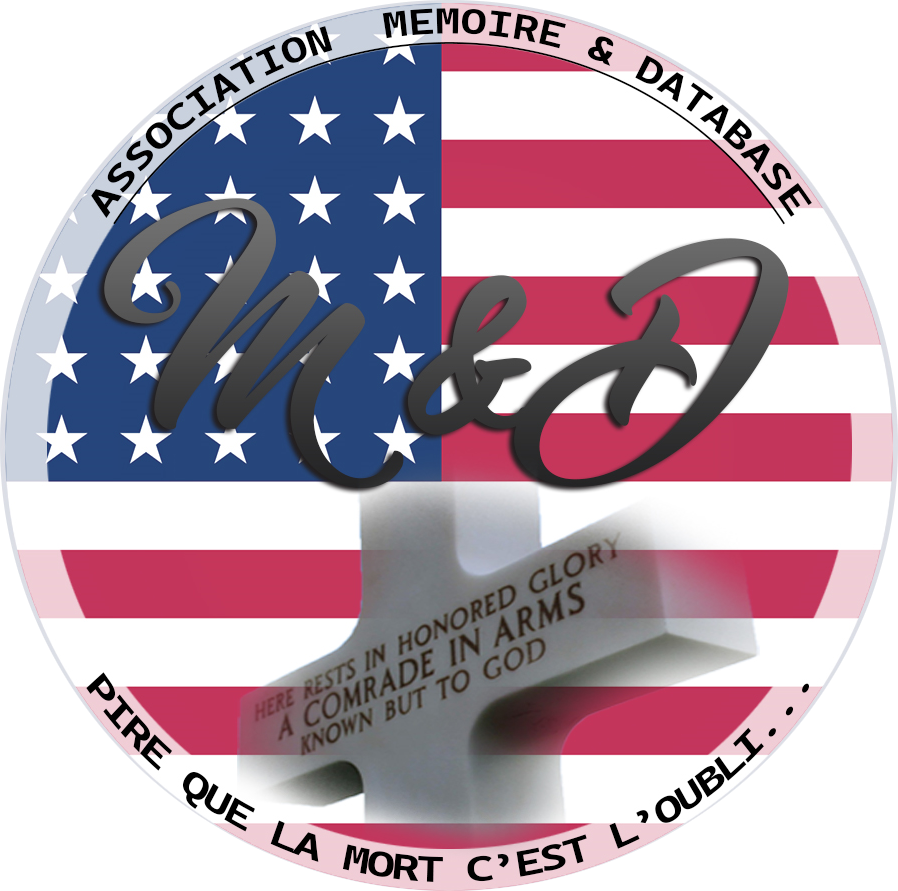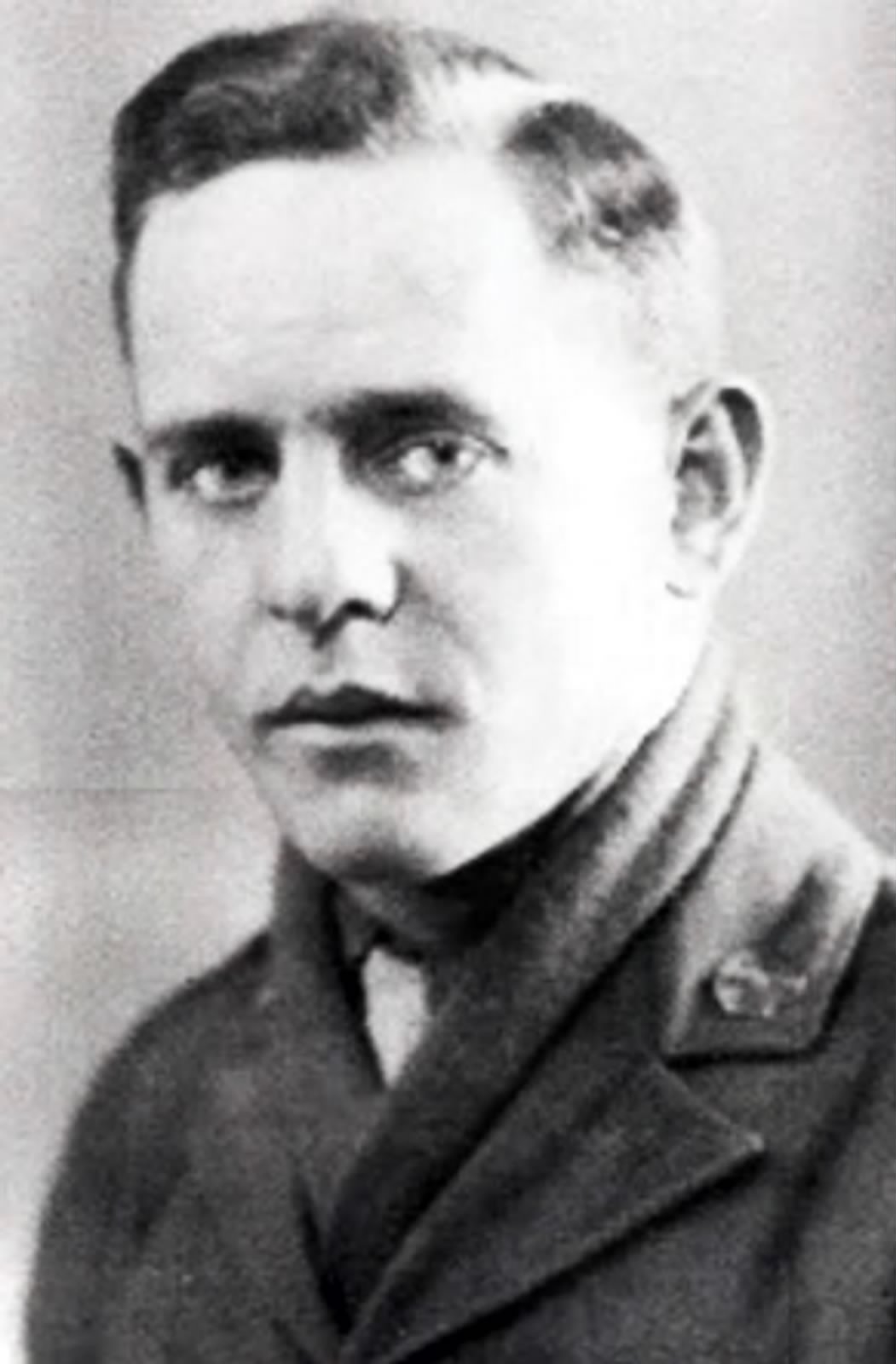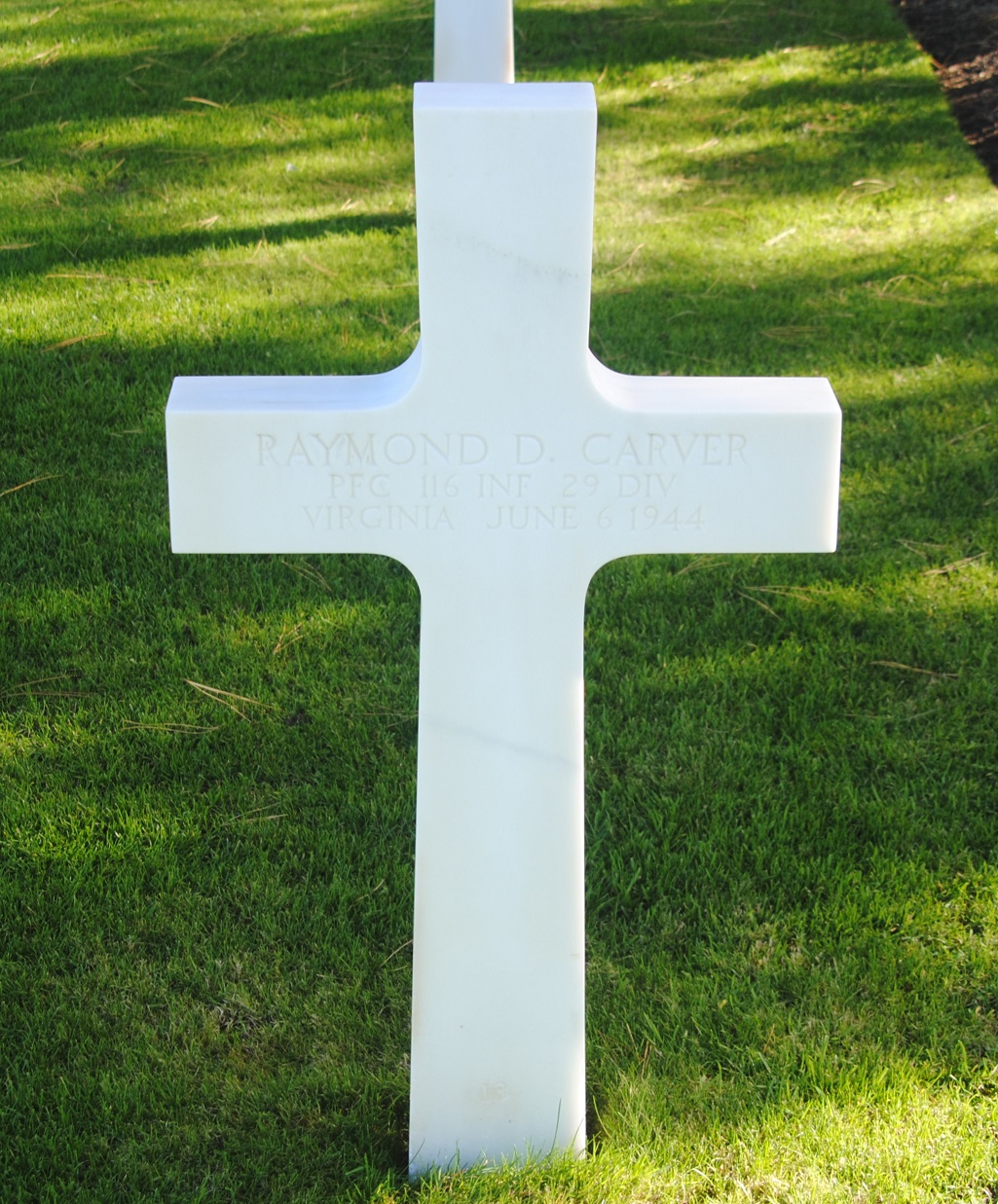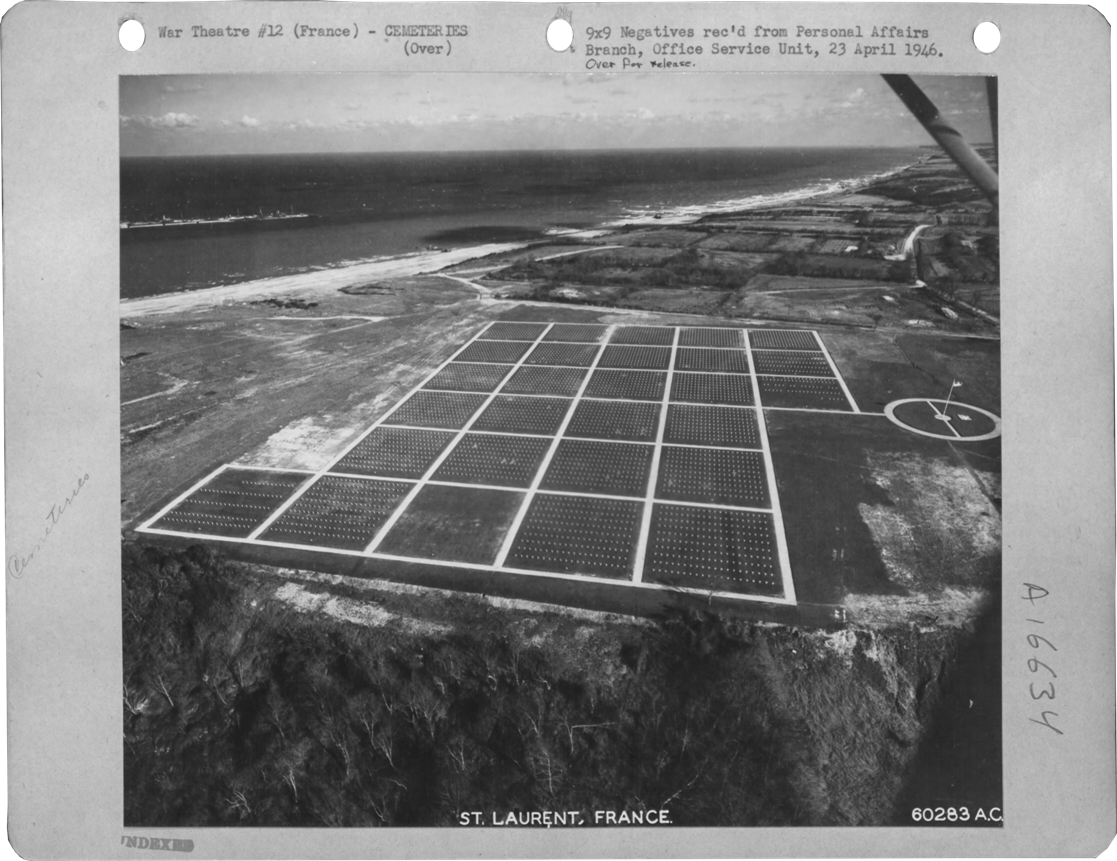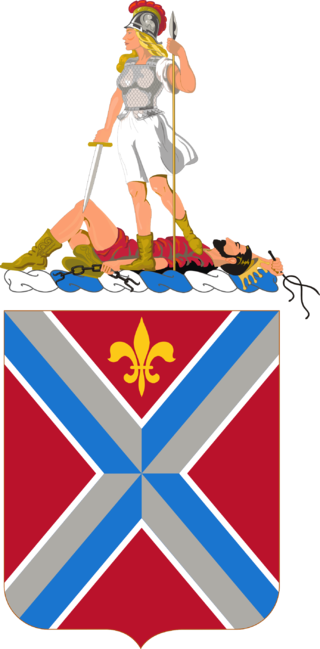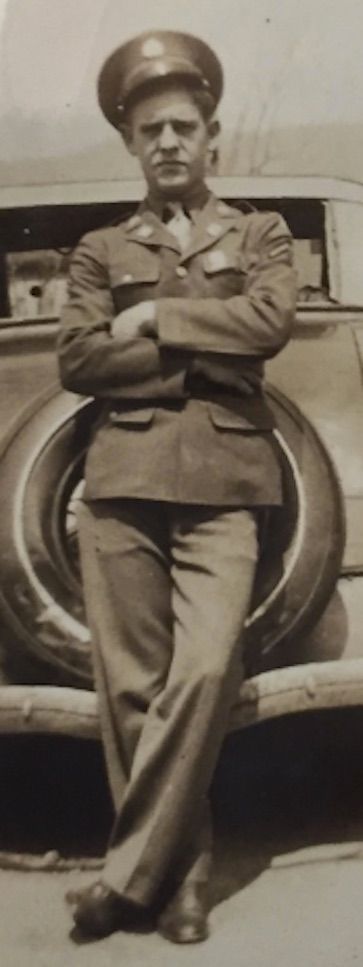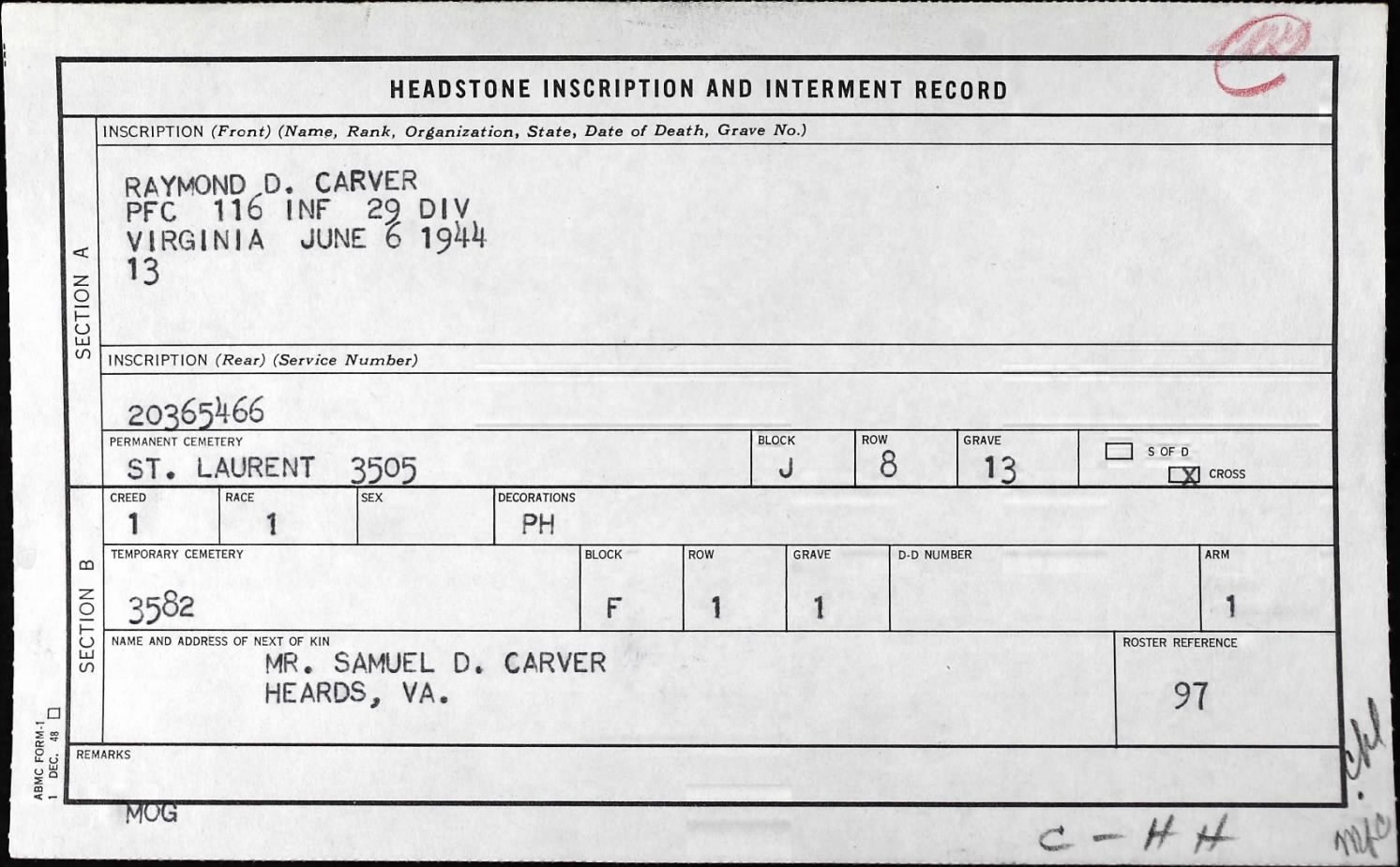|
Raymond Delmore CARVER
| ||||||||||||||||||||||||
|---|---|---|---|---|---|---|---|---|---|---|---|---|---|---|---|---|---|---|---|---|---|---|---|---|
|
Source : Suzstlouis
| ||||||||||||||||||||||||
| NUMERO DE SERVICE | 20365466 | |||||||||||||||||||||||
| AGE | 21 ans | |||||||||||||||||||||||
| DATE DE NAISSANCE | 16 juilllet 1922 Comté de Nelson | |||||||||||||||||||||||
| ÉTAT D’ENRÔLEMENT | VIRGINIA | |||||||||||||||||||||||
| FAMILLE | Parents : Samuel Douglas & Nannie Ethel Lynch CARVER Siblings : James O. & Mary Frances | |||||||||||||||||||||||
| GRADE | Private First Class | |||||||||||||||||||||||
| FONCTION | Infantry Man | |||||||||||||||||||||||
| PROFESSION AVANT INCORPORATION |  | |||||||||||||||||||||||
| DATE D'INCORPORATION | ||||||||||||||||||||||||
| COMPANY | Company M | |||||||||||||||||||||||
| REGIMENT | 116th Infantry Regiment | |||||||||||||||||||||||
| DIVISION | 29th Infantry Division | |||||||||||||||||||||||
| DATE DU DECES | 6 juin 1944 |
Source : Frogman | ||||||||||||||||||||||
| STATUT | KIA | |||||||||||||||||||||||
| LIEU DU DECES | Omaha Beach | |||||||||||||||||||||||
| CIMETIERE PROVISOIRE |
CIMETIERE PROVISOIRE de St Laurent N°3582
| |||||||||||||||||||||||
| CIMETIERE | NORMANDY AMERICAN CEMETERY de Colleville | |||||||||||||||||||||||
| TOMBE |
| |||||||||||||||||||||||
| DECORATION |
| |||||||||||||||||||||||
| ||||||||||||||||||||||||
| HISTOIRE | ||||||||||||||||||||||||
|
Raymond Delmore Carver est né le 16 juillet 1922 dans le comté de Nelson, en Virginie. Ses parents, Samuel Carver et Nannie Lynch, sont nés et se sont mariés en Virginie. Ils allaient et venaient entre les comtés de Nelson et d'Albemarle. Ils ont eu six enfants - trois filles et trois garçons. L'un des frères aînés de Ray a également servi pendant la Seconde Guerre mondiale. En 1940, Ray rejoint le 116th Infantry of the Virginia National Guard. Au début de 1941, la Garde nationale a été fédéralisée et Ray s'est retrouvé dans l'armée américaine. Il est affecté à la Compagnie K, 116e Régiment d'Infanterie, 29e Division d'Infanterie. Le 116e régiment s'est entraîné à Cape Henry et à Fort A.P. Hill, en Virginie. En septembre 1942, le régiment part pour l'Angleterre. Ils se sont entraînés dans plusieurs bases en Angleterre, dont Tidworth Camp, Wiltshire et Slapton Sands, Devonshire. À un moment donné au cours de la formation, Ray a été transféré à la compagnie M. La formation était rigoureuse et comprenait des répétitions d'assaut amphibie en prévision d'une invasion de la France. Faisant normalement partie de la 29e division, le jour J, le 116e régiment a été affecté au 1er régiment d'infanterie. La compagnie M a atterri sur Omaha Beach à H plus 57 minutes - à l'heure mais hors cible. Parce qu'ils étaient hors cible, le feu allemand n'était pas aussi intense que certaines sections d'Omaha Beach. La plupart des hommes ont réussi à sortir de la péniche de débarquement, mais ils ont quand même dû faire face aux balles, aux mines, aux barbelés et aux éclats d'obus. Le soldat de première classe Raymond D. Carver a été tué au combat le 6 juin 1944. Il a reçu la Purple Heart à titre posthume et est enterré au cimetière américain de Normandie à Colleville-sur-Mer, France |
Source : Bill Wheeler
| |||||||||||||||||||||||
|
Source : Suzstlouis | ||||||||||||||||||||||||
Activated/Activé |
Normandy/Normandie |
| 3 Feb 1941 | Days of Combat/Jour de Combat 242 |
| Casualties/Victimes 20 620 | |
Entered Combat/Entré au combat |
|
| 6 Jun1944 D-Day | |
|
Commanding Generals/Commandants généraux Maj. Gen. Milton A. Reckord (Feb 41 - Jan 42) |
Campaigns/CampagnesNormandy (6 Jun 44 - 24 Jul 44)
|
PLAN DE ROUTE DE LA CAMPAGNE - CAMPAIGN ROUTE MAP |
|
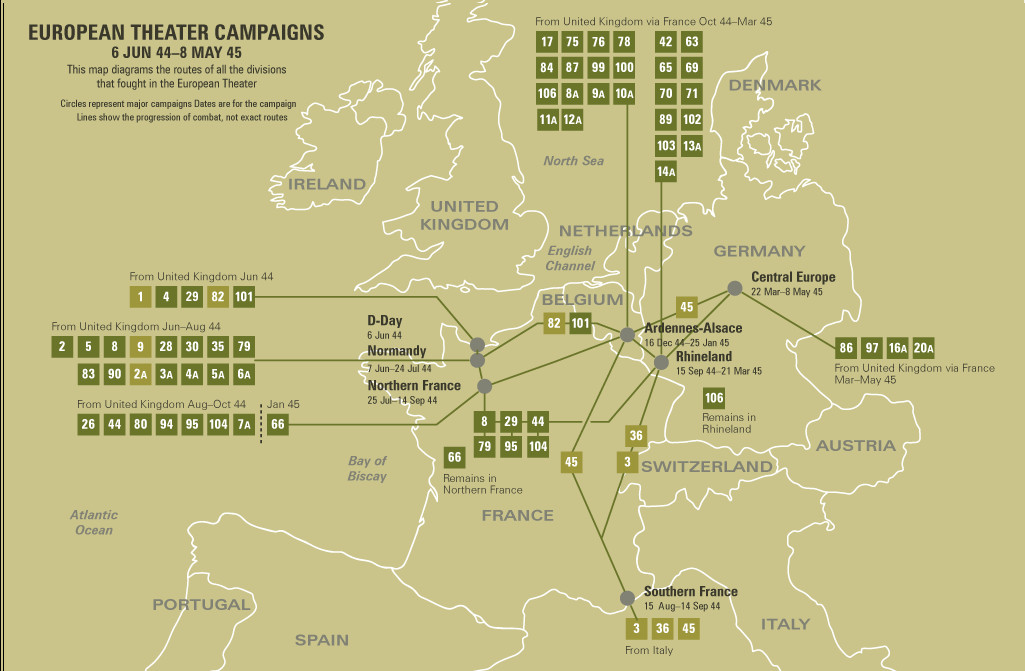 |
|
DIVISION CHRONICLEThe 29th Infantry Division trained in Scotland and England for the crosschannel invasion, October 1942-June 1944. Teamed with the 1st Division, a regiment of the 29th (116th Infantry) was in the first assault wave to hit the beaches at Normandy on D-day, 6 June 1944. Landing on Omaha Beach on the same day in the face of intense enemy fire, the Division soon secured the bluff tops and occupied Isigny, 9 June. The Division cut across the Elle River and advanced slowly toward St. Lo, fighting bitterly in the Normandy hedge rows. After taking St. Lo, 18 July 1944, the Division joined in the battle for Vire, capturing that strongly held city, 7 August. Turning west, the 29th took part in the assault on Brest, 25 August-18 September 1944. After a short rest, the Division moved to defensive positions along the Teveren-Geilenkirchen line in Germany and maintained those positions through October. (In mid-October the 116th Infantry took part in the fighting at the Aachen Gap.) On 16 November the Division began its drive to the Roer, blasting its way through Siersdorf, Setterich, Durboslar, and Bettendorf, and reaching the Roer by the end of the month. Heavy fighting reduced Julich Sportplatz and the Hasenfeld Gut, 8 December. From 8 December 1944 to 23 February 1945, the Division held defensive positions along the Roer and prepared for the offensive. The attack jumped off across the Roer, 23 February, and carried the Division through Julich, Broich, Immerath, and Titz, to Munchen-Gladbach, 1 March 1945. The Division was out of combat in March. In early April the 116th Infantry helped mop up in the Ruhr area. On 19 April 1945 the Division pushed to the Elbe and held defensive positions until 4 May. Meanwhile, the 175th Infantry cleared the Klotze Forest. After VE-day, the Division was on military government duty in the Bremen enclave. |
CHRONIQUE DE DIVISIONLa 29th Infantry Division s'entraîna en Ecosse et en Angleterre pour l'invasion crosschannel, d'octobre 1942 à juin 1944. En équipe avec la 1st Division, un régiment du 29th (116th Infantry) se trouvait dans la première vague d'assaut pour frapper les plages de Normandie. Le 6 juin 1944, débarquant à Omaha Beach, le même jour, face à un feu nourri de l'ennemi, la division s'empara bientôt des falaises et occupa Isigny, le 9 juin. La Division traversa la rivière Elle et s'avança lentement vers Saint-Lô, se battant amèrement dans les rangées de haies de Normandie. Après avoir pris St. Lo, le 18 juillet 1944, la division se joignit à la bataille de Vire pour s'emparer de cette ville fortement occupée, le 7 août. Tournant vers l'ouest, le 29 a pris part à l'assaut sur Brest, 25 août-18 septembre 1944. Après un court repos, la division a déménagé à des positions défensives le long de la ligne Teveren-Geilenkirchen en Allemagne et a maintenu ces positions jusqu'en octobre. (À la mi-octobre, le 116e régiment d'infanterie prit part aux combats à Aix-la-Chapelle.) Le 16 novembre, la division commença sa route vers la Roer, traversant Siersdorf, Setterich, Durboslar et Bettendorf, et atteignant la Roer par la fin du mois. Les combats intenses ont réduit Julich Sportplatz et le Hasenfeld Gut, le 8 décembre. Du 8 décembre 1944 au 23 février 1945, la division occupe des positions défensives le long de la Roer et se prépare à l'offensive. L'attaque a sauté à travers le Roer, le 23 février, et a porté la Division par l'intermédiaire de Julich, Broich, Immerath, et Titz, à Munchen-Gladbach, le 1er mars 1945. La Division était hors combat en mars. Au début du mois d'avril, le 116th Infantry a aidé à nettoyer la région de la Ruhr. Le 19 avril 1945, la division pousse vers l'Elbe et occupe des positions défensives jusqu'au 4 mai. Pendant ce temps, le 175th Infantry a dégagé la forêt de Klotze. Après le jour de la victoire, la division était en service militaire dans l'enclave de Brême. |
| SOURCE INFORMATION & PHOTO | Armydivs.squarespace.com |
|---|
| SOURCE INFORMATION & SOURCE PHOTO | Suzstlouis(Fold3) - Findagrave.com - Abmc.gov |
|---|---|
| PROGRAMMEURS | Henri, Garrett, Clive, Frédéric & Renaud |


